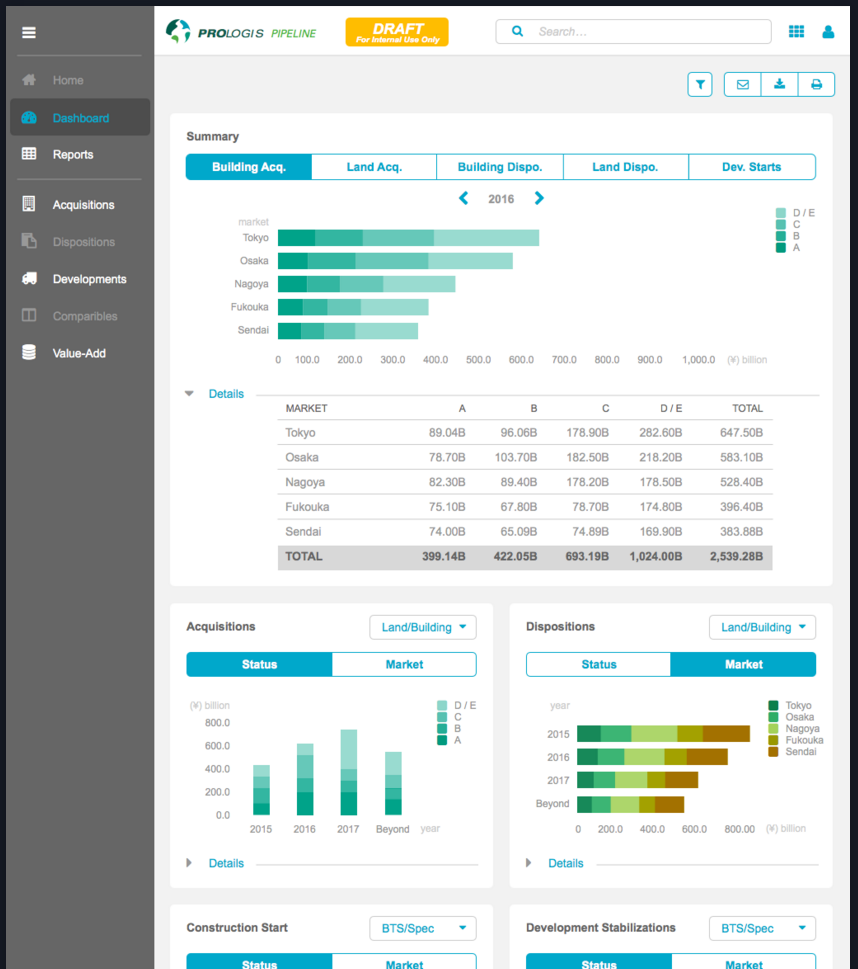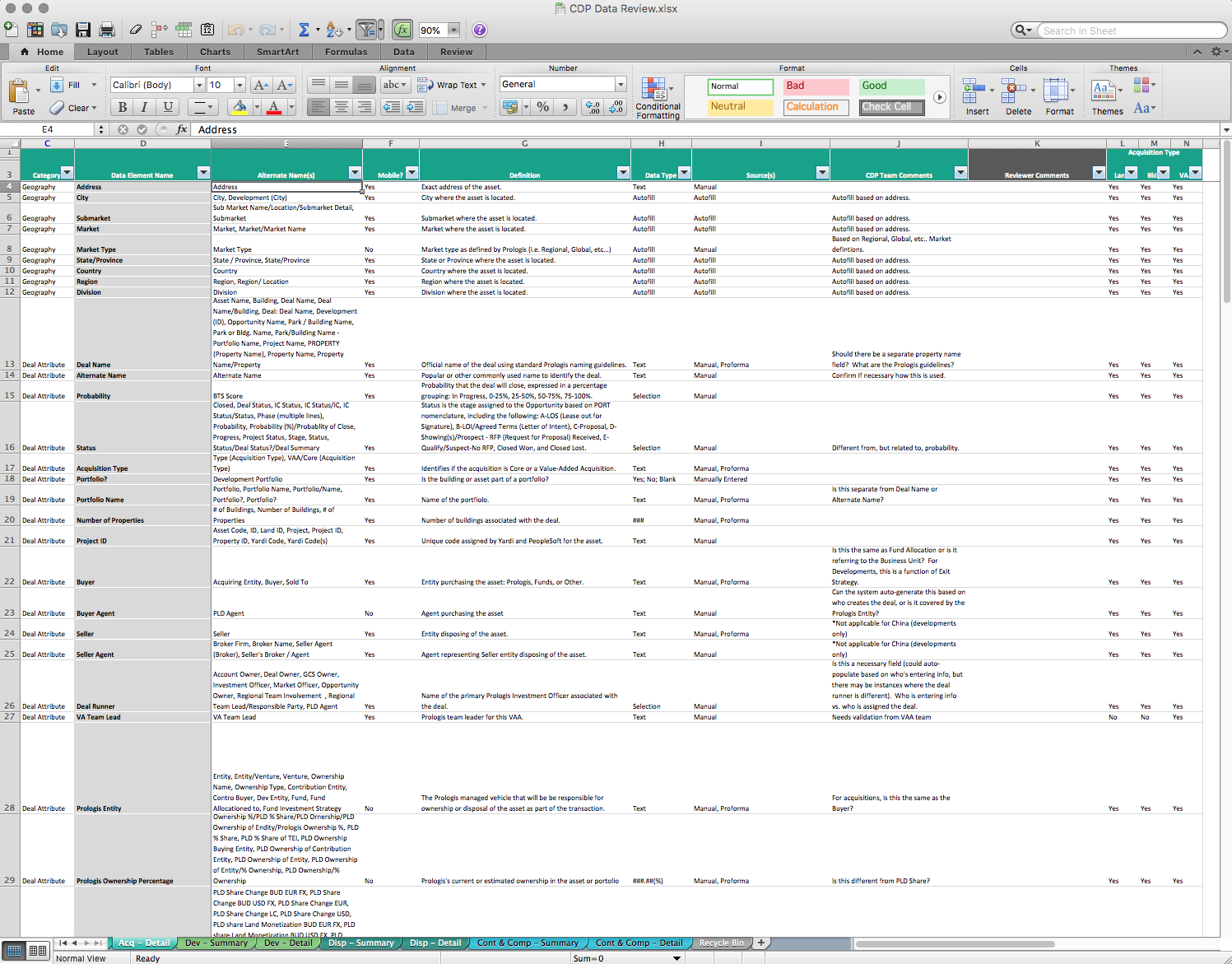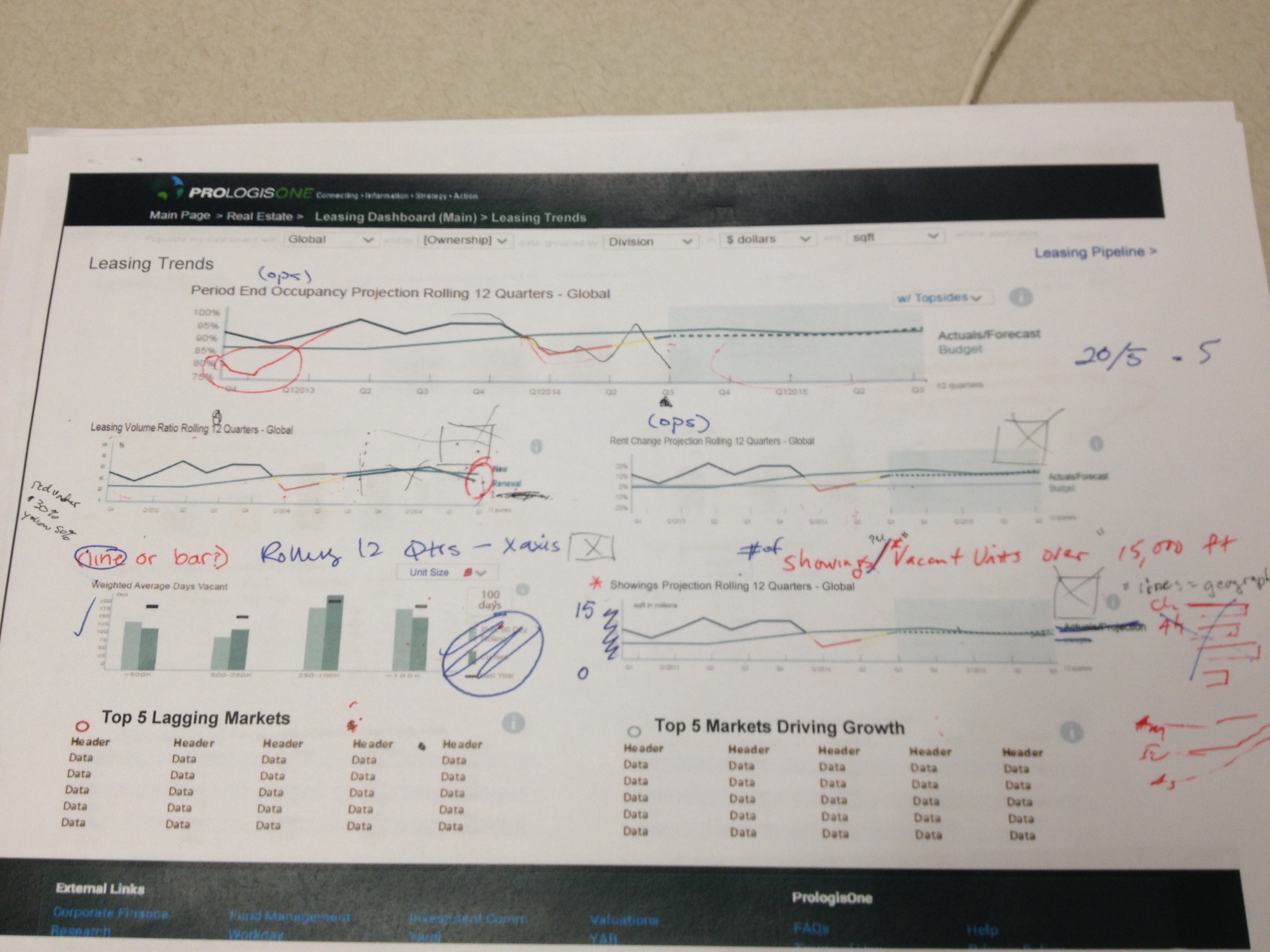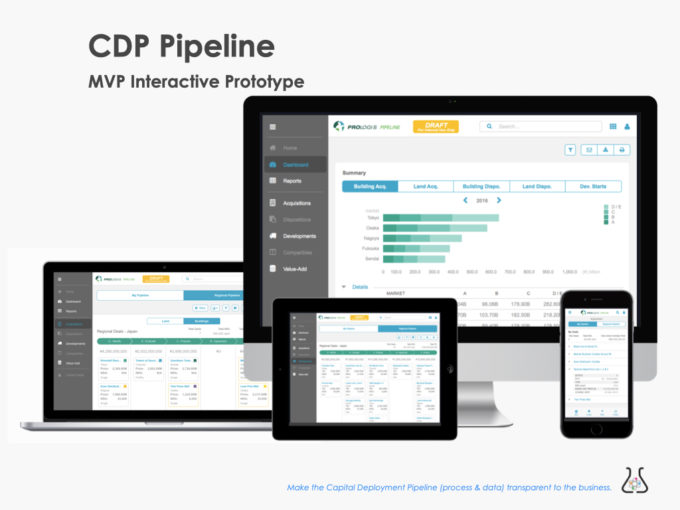
SYNOPSIS: CDP Pipeline (platform)
As Prologis’ first Director of Internal Digital Strategy, I oversaw every aspect of the creation and deployment of Prologis’ online internal Capital Deployment tool.
In an overly-simplified nutshell, Capital Deployment involves the decisions the company makes about where to spend money – buying, selling, developing or improving assets. CDP Pipeline is an effective, intuitive tool, built for and with the field that promotes improved capital pipeline management. The result is increased transparency and more efficient capital planning that empowers the business to make more strategic decisions.
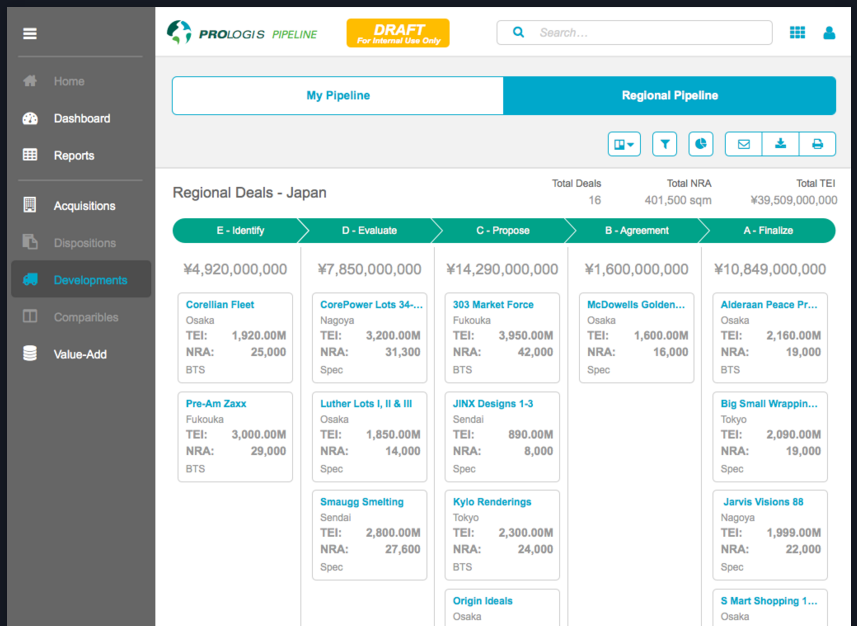
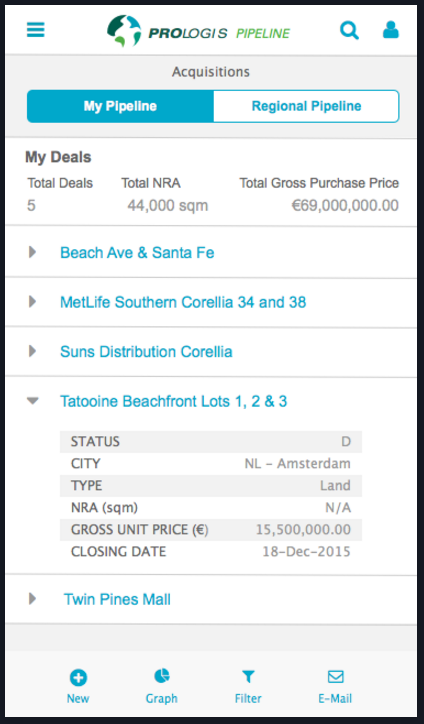
Hover over to scroll content
This internally-focused project involved:
STAGES
- User Research
- Product Strategy
- Dashboard Research
- User Journeys
- Process Mapping
- Information Architecture
- Conceptual Illustration
- Iterative Wireframes
- Prototype (interactive)
- Prioritized Roadmap
- User Testing (validation)
- Multiple Presentations to Stakeholders
TOOLS
- User Research/ Interviews
- iOS/ Android HIGs
- pattern library (created)
- Illustrator/Photoshop/ InDesign
- Sketch App
- Annotated Wireframes
- InVision App (Interactive Prototype)
- Lookback (user research screen recording)
- LucidCharts
- PowerPoint
- Gantt Chart (project management)
- JIRA (development)
CONTRIBUTIONS
(as in-house Director of Internal Digital Strategy)
- UX/Product Strategy: Skye Sant, Seth Kaplan
- BA/ Market Research: Guthrie Boon (CDP team)
- User Research: Skye Sant (Shawn Jenkins, CDP team)
- Illustration: Skye Sant
- Interaction Design: Skye Sant, Shawn Jenkins (CDP team)
- UI Design: Skye Sant, Shawn Jenkins, CDP team
- Visual Design: Shawn Jenkins, CDP team
- Gamification: Skye Sant
- Product Owner (user champion): Seth Kaplan
BACKGROUND:
Previous to this tool, the business was run via small group communications, meetings where large spreadsheets were exchanged and/or an informal process of intelligence gathering. The lack of a fully utilized, global pipeline tool limited transparency and the ability for management to make informed decisions. Divisional and Global Managers had very little visibility to regional pipelines and depended heavily on phone calls and rudimentary Microsoft Excel spreadsheets to stay in the know.
This process hampered timely review of opportunities and visibility into deal progression. With no centralized location in which to store this information, there was no holistic global view from which trends could be seen, no repository for dead-deals (i.e., those deals pursued but not won) or comparable market transactions, all of which inhibited strategic decision-making and organizational effectiveness. In addition, reports were often error-prone and forecast abilities were severely hampered.
TIMELINE:
12 months for a functional ‘minimum viable product’ (MVP)
• 5 mo: design and validate
• 6 months: build
- GOALS:
- Create a tool to gather the info from the agents in the field and surface it in an ‘always up to date’ digital platform (spreadsheet –> digital tool)
- Make the Capital Deployment Pipeline (process & data) transparent to the business
- Added business goal: Enable strategic decision-making and organizational effectiveness
- Added user goal: Make a tool by and for the field (user-centered)
- Added evaluation: UX process in this company
OUTCOME:
We succeeded in making a tool by and for the field in less than 6 months that afforded the transparency the executives needed along with the ease of use the field needed.

- Discover
- Interviews, content audits, whiteboard/design sessions
- Planning, communication
- Design
- Visual + Interaction Design
- Sketch –> Interactive Prototype –>MVP (through ethnographic user testing)
- Pivot: custom design –> Salesforce (Lightning)
- Evaluate
- Videos
- Validation: user acceptance testing, surveys
- Extend + Iterate:
- Enterprise assets (help system, quickstart), Pattern Library
- Extend functionality, dashboards
- Lesson:
- Global designs are complex and nuanced
- User-centered design is win-win: everyone is happy to have contributed and delighted by the outcome
- Digital transformation in one area changes a whole company
Other activities: Business Plan, Business Technology Investment Memo, stakeholder design exercises + meetings, vision + strategy presentations, user stories, Agile methodology, change management, executive check-in (3 wks), constantly changing priorities, education of the business, development: user stories, acceptance criteria, guerilla QA, plan for user testing, plan for rollout (change management)
NOTE: this process looks linear in this write-up – in fact, we were designing, prototyping, validating and iterating while the development team was coding a previously validated design. In reality, though the design was started first, the building of the CDP Pipeline tool was done overlapping dev with design activities.
In this company, I was allowed and planned for qualitative and quantitative testing. By every measure, we hit it out of the park.
- GOALS:
- Create a tool to gather the info from the agents in the field and surface it in an ‘always up to date’ digital platform (spreadsheet –> digital tool)
- Make the Capital Deployment Pipeline (process & data) transparent to the businessAdded business goal: Enable strategic decision-making and organizational effectiveness
- Added user goal: Make a tool by and for the field (user-centered)
- Added evaluation: UX process in this company
- OUTCOMES:
- Timeline: 6 months (overlapping test/development), on time and on budget
- Quantitative:
- 96% Success (add new deal <1 min)
- 73% Increase employee productivity (less time on task, error rate, training)
- 4.52/5 Satisfaction rating (tool)
- 4.93/5 Satisfaction rating (Process improvement)
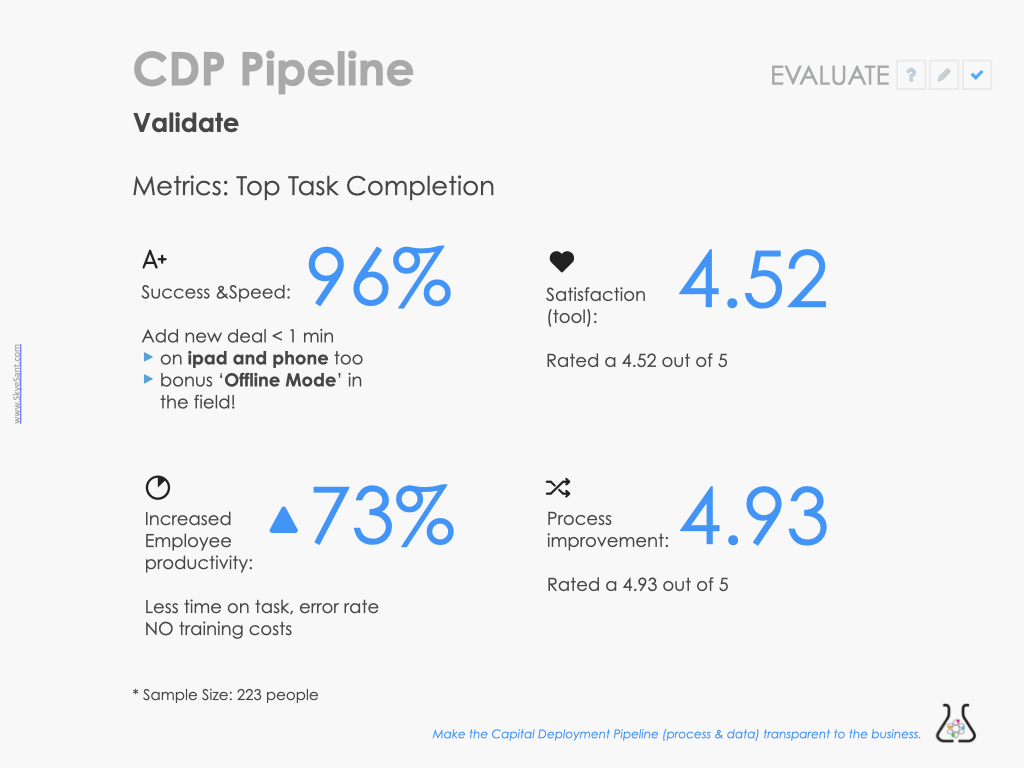
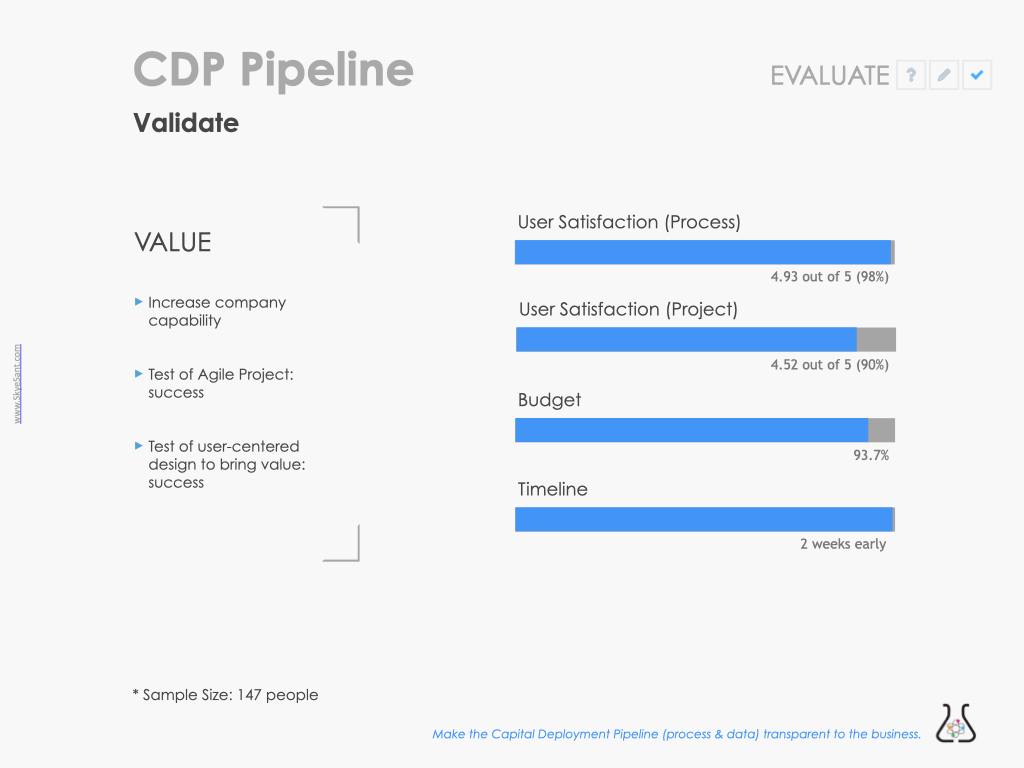
.

